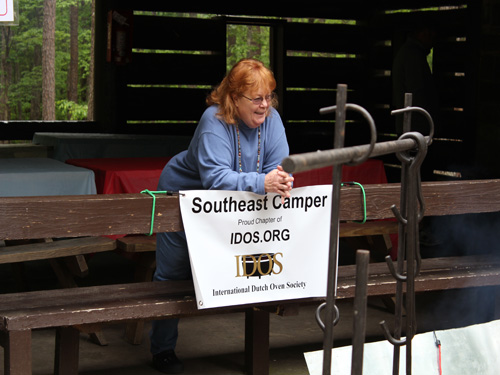What kind to Buy? Aluminum or Cast Iron?
As with anything check it for defects and blemishes. The legs on a Dutch oven should be straight. The lid should fit easily with a small amount of play. The lid should be able to be turned without sticking. I’ve found good cast iron at yard sales and flea markets. See the chart below for sizes and weights.
Cast Iron Dutch Ovens:
Diameter
Weight (lbs)
Capacity
Serves
5"
3¾
1 qt.
1-3
8"
9¼
2 qt.
2-6
12"
18
6 qt.
6-16
12" D
19¾
8 qt.
6-22
14"
24½
8 qt.
8-25
14" D
27
12 qt.
10-30
16"
33
12 qt.
12-40
Aluminum Dutch Ovens:
Diameter
Weight (lbs)
Capacity
Serves
10"
4½
4 qt.
2-8
12"
7½
6 qt.
6-18
The cast iron Dutch ovens have been around for 100 hundreds of years and about 20 or so years ago came along aluminum ones. The aluminum ones weight in at about two thirds less than cast iron, so if weight is an issue, than aluminum is just fine. Besides being lighter aluminum have other advantages. Like, easy to clean, can be washed with soap and do not need to be seasoned. The draw backs are in cooler weather aluminum does not retain its heat like cast iron and because of this the browning of foods is harder.
May your coals burn hot and your kettles stay black.
Dan & Katherine


Pingback: Dutch Oven Cooking for 40 - Outdoor Basecamp Forums